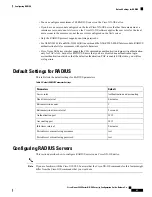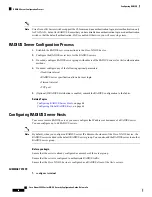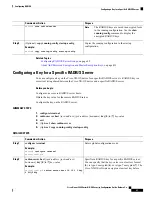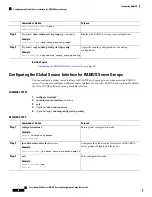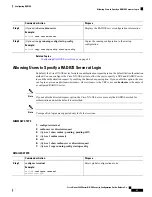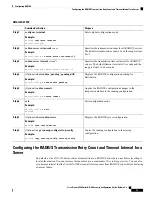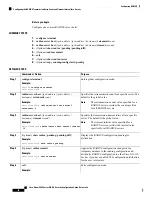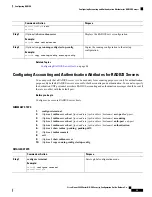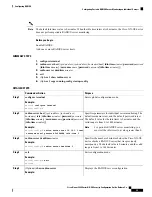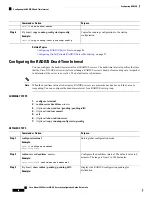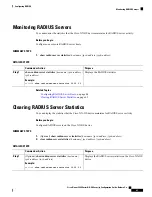
Purpose
Command or Action
switch(config)#
exit
switch#
Displays the RADIUS server configuration.
(Optional)
show radius-server
Example:
Step 7
switch#
show radius-server
Copies the running configuration to the startup
configuration.
(Optional)
copy running-config startup-config
Example:
Step 8
switch#
copy running-config startup-config
Related Topics
Configuring RADIUS Server Hosts
, on page 44
Configuring Accounting and Authentication Attributes for RADIUS Servers
You can specify that a RADIUS server is to be used only for accounting purposes or only for authentication
purposes. By default, RADIUS servers are used for both accounting and authentication. You can also specify
the destination UDP port numbers where RADIUS accounting and authentication messages should be sent if
there is a conflict with the default port.
Before you begin
Configure one or more RADIUS server hosts.
SUMMARY STEPS
1.
configure terminal
2.
(Optional)
radius-server host
{
ipv4-address
|
ipv6-address
|
hostname
}
acct-port udp-port
3.
(Optional)
radius-server host
{
ipv4-address
|
ipv6-address
|
hostname
}
accounting
4.
(Optional)
radius-server host
{
ipv4-address
|
ipv6-address
|
hostname
}
auth-port udp-port
5.
(Optional)
radius-server host
{
ipv4-address
|
ipv6-address
|
hostname
}
authentication
6.
(Optional)
show radius
{
pending
|
pending-diff
}
7.
(Optional)
radius commit
8.
exit
9.
(Optional)
show radius-server
10.
(Optional)
copy running-config startup-config
DETAILED STEPS
Purpose
Command or Action
Enters global configuration mode.
configure terminal
Example:
Step 1
switch#
configure terminal
switch(config)#
Cisco Nexus 9000 Series NX-OS Security Configuration Guide, Release 9.x
55
Configuring RADIUS
Configuring Accounting and Authentication Attributes for RADIUS Servers



